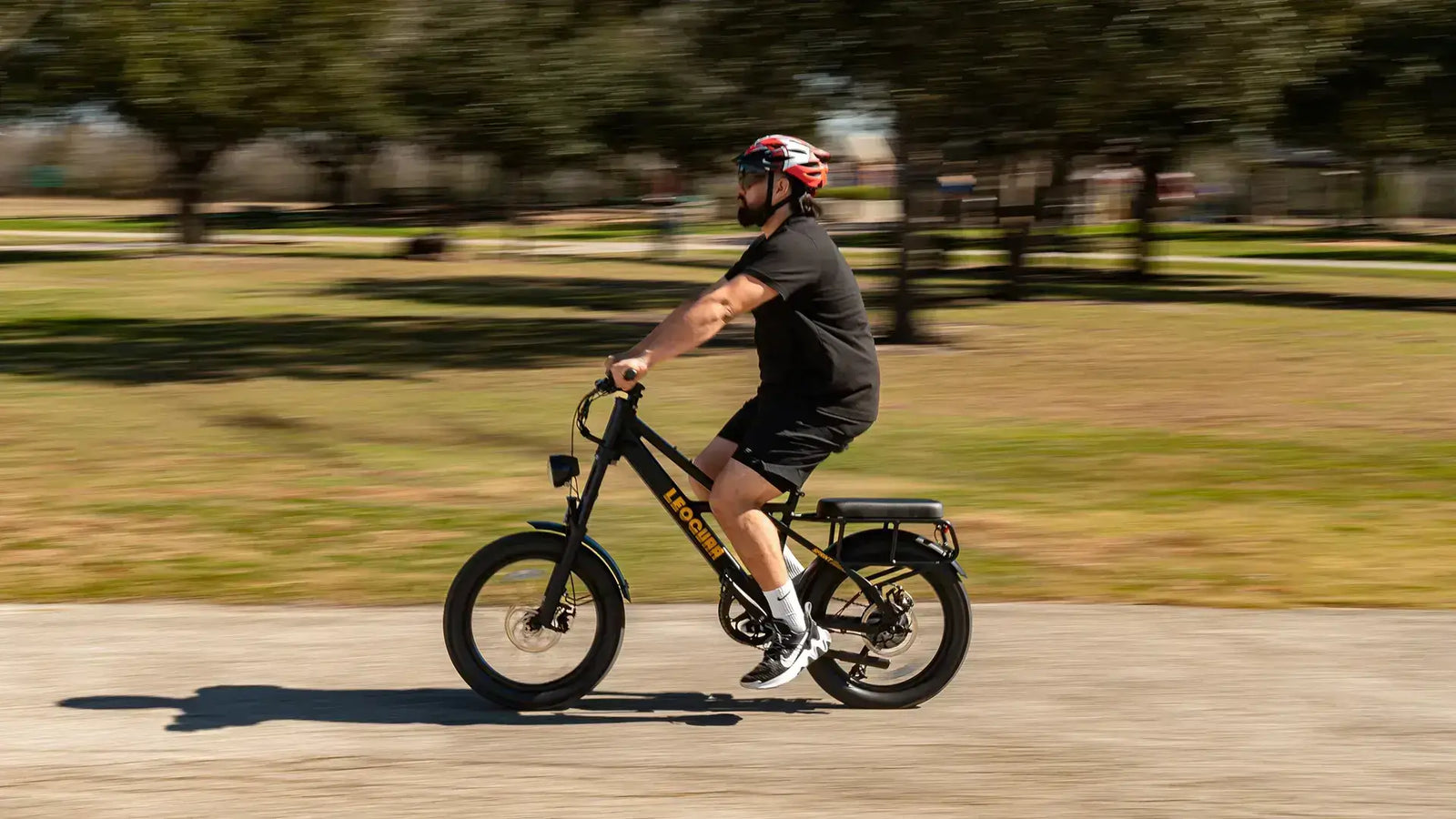
Best All Terrain Bike Guide: Choose Your Perfect E-Bike
So, you want an electric bike that can do it all. One that moves smoothly through city streets during the week and explores gravel paths and forest trails on weekends with confidence. The problem is simple. The term "all terrain bike" confuses many people in the cycling world. It's a marketing term used to describe everything from tough electric mountain bikes to strong commuter bikes.
The truth is clear. A good bike for all terrain depends on what "all terrain" means to you. A bike that works great on mountain trails will feel slow and heavy on your daily ride to work. A bike that's perfect for paved paths will be uncomfortable and unsafe on rocky trails. This guide gives you a clear way to cut through the confusion. We will help you figure out your specific needs and choose the perfect all-terrain e-bike for your rides.
Define Your Terrain
The most important step in choosing the right e-bike is to honestly think about where you will actually ride it. We use the "80/20 Rule" for this: most people spend 80% of their time on one main type of ground and only 20% on other surfaces. Your goal is to choose a bike that works best for that 80%, while still being good enough for the other 20%.
Being matched wrong with your bike creates frustration. Riding a heavy, full-suspension e-MTB for a daily 10-mile commute is what we call being "overbiked." The bumpy tires create drag and noise on pavement, the suspension takes away your pedaling energy, and the extra weight makes the bike feel slow and hard to ride. You're carrying ability you never use.
On the other hand, taking a lightweight hybrid e-bike onto a technical, root-filled trail is being "underbiked." This is not just uncomfortable; it's dangerous. The tires don't grip loose dirt well, the frame and wheels aren't made for repeated hits, and the brakes may not give enough power for steep downhills.

To find your ratio, think about this checklist and be honest about how you'll split your time:
- Paved Surfaces: City streets, bike lanes, smooth paths, and neighborhood roads. This is where daily commuting and fitness riding happen.
- Lightly Unpaved: Well-kept gravel roads, hard-packed dirt trails, canal paths, and fire roads. These surfaces are fairly smooth but can be loose or uneven.
- Rough Trails: Technical ground with rocks, roots, steep climbs and downhills, mud, or sand. This is true mountain biking territory.
Now, ask yourself: are you an 80% city commuter who wants to explore park trails on the weekend? Or are you an 80% trail rider who just needs to ride on pavement to get to the trailhead? Your answer is the key that opens the rest of this guide.
Decode E-Bike Categories
Once you've defined your terrain, you can start to understand the main types of e-bikes that are often sold as "all-terrain." Each one is a specialist in its own way, with clear advantages and disadvantages.
Electric Mountain Bikes (E-MTBs)
These are the true off-road experts, built with strong frames, powerful brakes, and suspension to handle impacts. They are the top choice for riders whose "all-terrain" includes actual mountains.
- Hardtail E-MTBs: These have suspension only in the front fork. This makes them more efficient and lighter than full-suspension bikes, giving a great balance for riders who tackle moderate trails but also spend time on smoother surfaces. They give a direct, connected feel to the trail.
- Full-Suspension E-MTBs: With both front and rear suspension, these bikes offer maximum comfort, grip, and control on the roughest ground. As noted by brands like Specialized, they are made to let you fly uphill and rip downhill. This ability comes at the cost of higher weight and reduced pedaling efficiency on pavement.
Fat Tire E-Bikes
You can spot these right away by their huge tires (4 inches or wider), and these bikes are the masters of soft surfaces. They float over sand, snow, and deep mud where other bikes would sink. This makes them incredibly fun for specific places, but the massive tires are heavy and create significant rolling resistance, making them feel slow and sluggish on pavement.
Gravel & All-Road E-Bikes
These are the versatile speed demons of the mixed-surface world. They combine the efficient riding position and drop-bar handlebars of a road bike with a more stable frame shape and room for wider, grippier tires. As Velo magazine notes, these are basically modern endurance bikes with more tire clearance, making them perfect for riders who spend most of their time on pavement but want the freedom to smoothly move to gravel roads and hard-packed dirt. They are fast and efficient but are not built for technical, rocky trails.
Robust Hybrid E-Bikes
A hybrid is a mix of road and mountain bike features, creating a versatile do-it-all machine. They typically have flat handlebars for an upright, comfortable riding position, front suspension to smooth out bumps, and tires that are wider than a road bike's but narrower than a mountain bike's. They are an excellent choice for city commuting, bike path cruising, and light trail use. However, their parts are not made for the demands of serious off-roading.
| E-Bike Type | Best For (Primary Terrain) | Pros | Cons |
|---|---|---|---|
| Hardtail E-MTB | Moderate Trails, Mixed Surfaces | Efficient, lighter than full-suspension, good balance of ability and on-road performance. | Less comfortable and capable on very rough terrain. |
| Full-Suspension E-MTB | Rough, Technical Trails | Maximum comfort, grip, and control on challenging terrain. Builds confidence. | Heavy, expensive, inefficient on pavement due to suspension and bumpy tires. |
| Fat Tire E-Bike | Sand, Snow, Mud | Unmatched floating on soft surfaces, very stable ride. | Slow, heavy, and inefficient on pavement and hard-packed trails. |
| Gravel/All-Road E-Bike | Pavement, Light Gravel | Fast, efficient, and versatile for long distances on mixed smooth surfaces. | Not suitable for technical mountain bike trails; less comfortable than a hybrid. |
| Robust Hybrid E-Bike | Pavement, Light Trails | Comfortable upright position, versatile for commuting and fun. | Not strong or capable enough for serious off-road riding. |
The Critical Trade-Offs
Choosing an all-terrain e-bike is a game of managing trade-offs. The features that make a bike excel in one place often become a problem in another. Understanding these compromises is the key to moving beyond simple definitions and finding the bike that truly fits your riding style.
Efficiency vs. Capability
This is the main conflict. Every feature that adds off-road ability—like wide bumpy tires, long-travel suspension, and relaxed frame shape—naturally reduces on-road efficiency. Those bumpy tires that grip loose dirt create huge rolling resistance on asphalt, slowing you down and draining your battery faster. The suspension that soaks up rocks and roots can bounce up and down on smooth pavement, wasting your pedaling energy. You wouldn't drive a monster truck to win a Formula 1 race; likewise, you shouldn't choose a full-suspension e-MTB if your goal is a fast and efficient commute.
Weight vs. Handling
Capability often comes with weight. Full-suspension systems, strong frames, and large fat tires all add pounds. On the trail, this extra weight can make the bike feel more planted and stable through rough sections. Off the bike, it's a different story. A heavier bike is harder to lift onto a car rack, carry up a flight of stairs, or move around in a tight garage. It's also more difficult to pedal without motor help, which is a key thing to consider if you ever run out of battery. Lighter bikes, like gravel and hybrid models, feel more nimble and are far easier to manage in daily life.
Comfort vs. Connection
Suspension is made for comfort and control. A full-suspension bike smooths out the terrain, protecting you from jarring impacts and allowing the wheels to stay in contact with the ground for better grip. However, some riders prefer the more direct feeling of a hardtail or a rigid gravel bike. Without rear suspension, you feel more connected to the trail, getting more feedback through the pedals and seat. This can make the ride feel more engaging and can help a skilled rider better understand how the bike is working with the terrain.
Matching to Your Profile
Let's apply these trade-offs to the 80/20 profiles:
- If your profile is 80% Pavement / 20% Light Trail: Your priority is efficiency. A Gravel or Hybrid E-Bike is your best choice. They are fast and light enough for enjoyable daily rides, with enough ability in the tires and shape to handle the occasional dirt path or gravel road. An E-MTB would feel slow and heavy for the 80% of your riding.
- If your profile is 50% Pavement / 50% Moderate Trail: You need a true all-rounder. A Hardtail E-MTB offers the best balance. It's truly capable and fun on singletrack trails, but the lack of rear suspension makes it more efficient and lighter than a full-suspension model for your time on the road.
- If your profile is 80% Rough Trail / 20% Pavement: Your priority is off-road ability. A Full-Suspension E-MTB is the clear choice. Don't compromise on the part of riding you love most. Accept that it will be less efficient on the short paved sections and optimize for maximum control, comfort, and fun on the trails where you spend the vast majority of your time.
Evaluate Core Components
Beyond the bike category, the specific parts determine its performance, reliability, and feel. An informed buyer looks past the marketing and at the spec sheet. Here are the four core components that define an all-terrain e-bike.
1. The Motor: Mid-Drive vs. Hub-Drive
This is arguably the most important decision.
* Mid-Drive Motors: Located at the bike's cranks (where the pedals are), these motors apply power directly to the drivetrain. This results in a balanced, natural-feeling ride that mimics your own pedaling effort. They are more efficient, especially on hills, because they use the bike's gears. For any serious trail riding, a mid-drive from a well-known brand like Bosch, Shimano, Brose, or Yamaha is the better choice.
* Hub-Drive Motors: Located in the hub of the rear (or sometimes front) wheel, these motors push the bike along. They are less expensive and simpler, but they can create an unbalanced weight distribution and a less natural "pushing" feeling. They work fine for flatter commutes and light fun use but are less suited for the demands of technical off-road terrain.
2. Suspension: How Much You Need
Suspension travel, measured in millimeters (mm), decides how much a fork or rear shock can compress to absorb impacts. More travel means more ability for rough terrain.
* 80-120mm: Found on hybrid bikes and cross-country (XC) e-MTBs. This is enough to take the edge off bumps, curbs, and smooth-to-moderate trails.
* 130-160mm: This is the sweet spot for "trail" and "all-mountain" bikes. It's a versatile range that provides enough travel to handle significant rocks and drops while still being efficient enough to pedal uphill. Most riders looking for a true all-terrain mountain bike will be happy in this range.
* 170mm+: This is for "enduro" and "downhill" bikes. This level of travel is made for the most aggressive terrain, bike parks, and racing. It's too much for anything less.
3. Brakes: Hydraulic vs. Mechanical
Stopping power is not a place to compromise.
* Hydraulic Disc Brakes: These use fluid to work the brake pads. They provide far better stopping power, better control (fine adjustment), and are more reliable with less frequent tuning. For any riding that involves steep downhills or high speeds, hydraulic discs are a must-have for safety.
* Mechanical Disc Brakes: These use a steel cable to pull the brake part. They are less expensive but offer less power and require more hand strength to operate. They also need more frequent adjustment to make up for pad wear. They work okay for budget bikes used in flatter areas.
4. Tires and Wheels
Your tires are the only part of the bike that touches the ground. Their design is critical.
* Tire Width & Tread: Wider tires with aggressive, bumpy tread patterns provide more grip on loose dirt, mud, and rocks. Smoother, narrower tires have less rolling resistance, making them faster and more efficient on pavement.
* Wheel Size (27.5" vs. 29"): This is a common choice on modern E-MTBs. 27.5" wheels are slightly smaller, making the bike feel more nimble, agile, and playful in tight corners. 29" wheels (or "29ers") have a larger diameter, allowing them to roll over obstacles more easily and maintain speed better, making them feel faster and more stable on open trails. Some bikes even use a "mullet" setup (29" front, 27.5" rear) to try and get the best of both worlds.
| Riding Profile | Recommended Motor | Recommended Suspension | Recommended Brakes |
|---|---|---|---|
| 80% Pavement | Hub or Mid-Drive | 80-100mm Front or Rigid | Mechanical or Hydraulic Disc |
| 50/50 Mixed | Mid-Drive | 120-140mm Front (Hardtail) | Hydraulic Disc |
| 80% Trail | Mid-Drive | 140-160mm Full-Suspension | Powerful 4-Piston Hydraulic Disc |
Budget and Long-Term Value
A quality all-terrain e-bike is a big investment, but thinking about it in terms of value rather than just cost will lead to a better long-term experience. A reliable bike you love to ride is worth more than a cheap one that constantly has problems.
Realistic Price Tiers
- Entry-Level ($1,500 - $2,500): Bikes in this range typically have hub-drive motors and entry-level parts like mechanical disc brakes and basic coil-spring suspension forks. They can be a good starting point for riders focused on pavement and very light trails, but may lack the strength and performance for more demanding use.
- Mid-Range ($2,500 - $5,000): This is the sweet spot for performance and value. Here you'll find bikes with high-quality mid-drive motor systems from brands like Bosch and Shimano, reliable air-sprung suspension, and powerful hydraulic disc brakes. For most riders, a bike in this range will provide a fantastic, strong, and capable experience across a wide variety of terrains.
- Premium ($5,000+): This tier is for enthusiasts who want the best. These bikes have lightweight carbon fiber frames, top-of-the-line electronic shifting, advanced suspension technology, and the most powerful motors. The performance gains are real but become increasingly small for the average rider.
Beyond the Sticker Price
Remember to budget for essential gear. At a minimum, you will need a quality helmet. We also highly recommend gloves, a floor pump, a portable multi-tool, and a spare tube. These items are crucial for safety, comfort, and basic roadside maintenance.
Where to Buy
- Local Bike Shop (LBS): For beginners, the value of a good LBS is huge. They provide expert advice to ensure you get the right size and type of bike, offer test rides, perform professional assembly (which is critical for safety), and handle future service and warranty claims.
- Direct-to-Consumer (DTC): Brands that sell directly online can often offer more competitive pricing for the parts you get. However, this path requires you to be comfortable with doing the final assembly yourself (or paying a shop to do it) and handling most maintenance and troubleshooting on your own.
Your Adventure Awaits
The "best all terrain bike" isn't a specific model; it's the e-bike that is perfectly aligned with your life and your rides. It's the one that matches your personal 80/20 riding ratio. By following this framework, you can move past the confusing marketing and make a choice based on a clear understanding of your own needs.
First, define your terrain. Second, decode the bike categories and their built-in trade-offs. Third, evaluate the core parts that decide performance. Finally, set a realistic budget that includes essential gear.
Now you have the knowledge and the framework to shop with confidence. Get out there, test ride a few different types of bikes if you can, and get ready to start your next adventure.
Frequently Asked Questions
Q: What is the best all terrain bike for beginners?
A: For beginners, a robust hybrid e-bike or hardtail e-MTB is usually the best choice. These bikes offer good versatility without being too complex or expensive. They can handle city streets and light trails while being easier to maintain than full-suspension models.
Q: Can I use a full-suspension e-MTB for daily commuting?
A: While you can use a full-suspension e-MTB for commuting, it's not ideal for daily rides on pavement. The heavy weight, bumpy tires, and suspension make it less efficient and slower than bikes designed for road use. You'll drain your battery faster and the ride will feel sluggish.
Q: How do I know if I need a mid-drive or hub-drive motor?
A: Choose a mid-drive motor if you plan to ride on hills, trails, or varied terrain. Mid-drive motors are more efficient and provide better balance. Hub-drive motors work fine for flat commutes and casual riding but struggle more on steep climbs and technical terrain.
Q: What's the difference between 27.5" and 29" wheels for all-terrain riding?
A: 29" wheels roll over obstacles more easily and maintain speed better, making them great for open trails and longer rides. 27.5" wheels are more nimble and playful, better for tight, technical trails. For true all-terrain use, 29" wheels are usually the better choice.
Q: How much should I budget for a quality all-terrain e-bike?
A: Plan to spend $2,500-$5,000 for a quality all-terrain e-bike with good components like a mid-drive motor and hydraulic brakes. Don't forget to budget an extra $200-$400 for essential gear like a helmet, tools, and accessories.



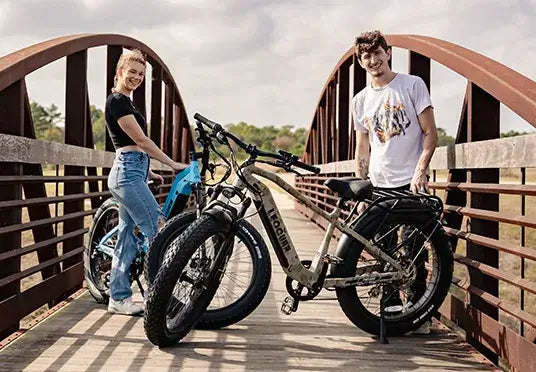
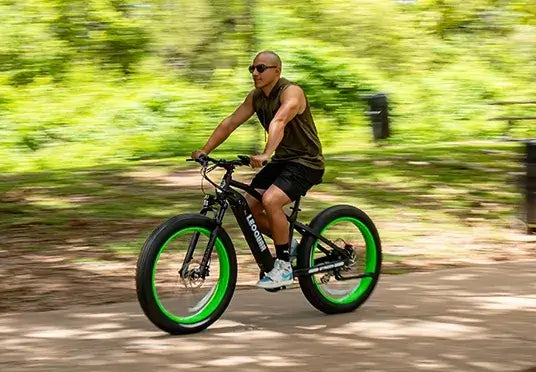
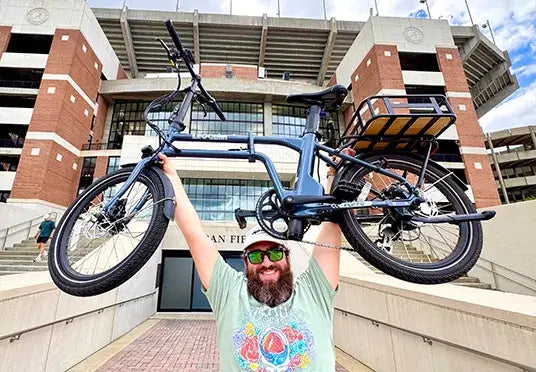
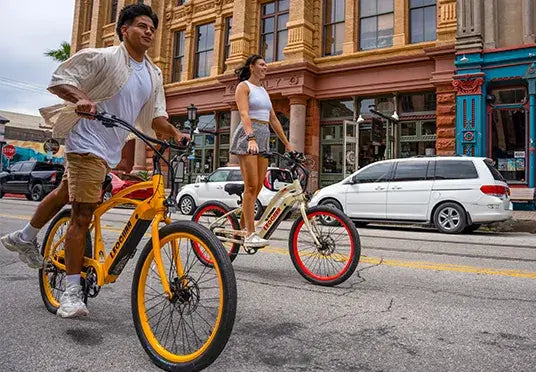
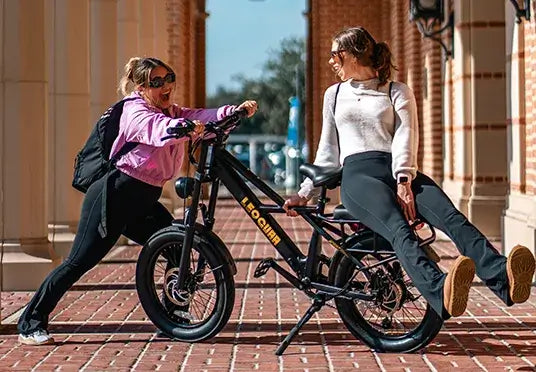
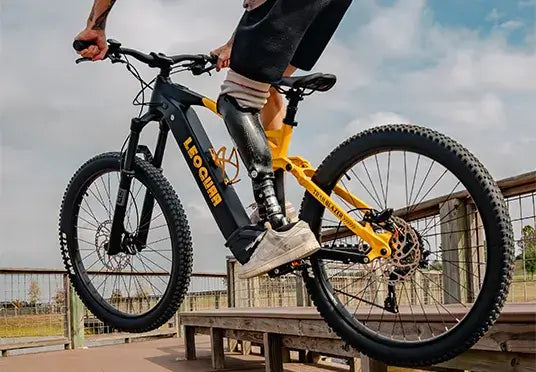
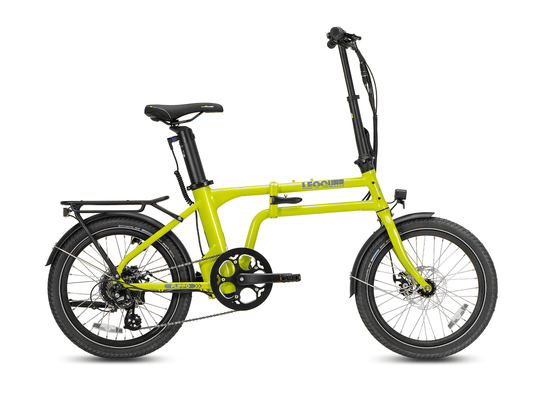
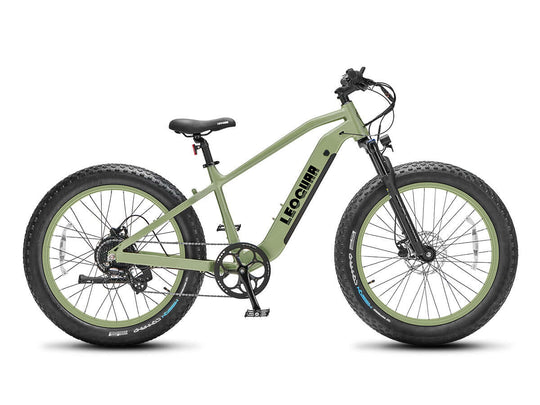
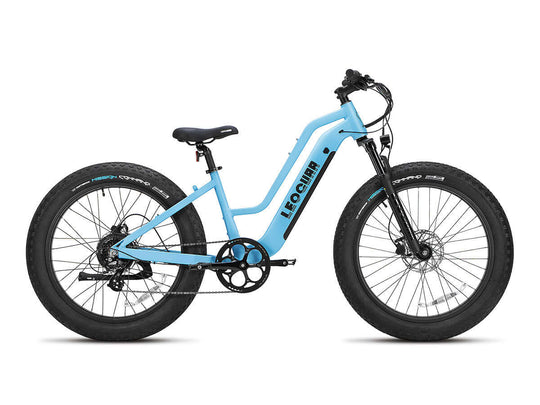
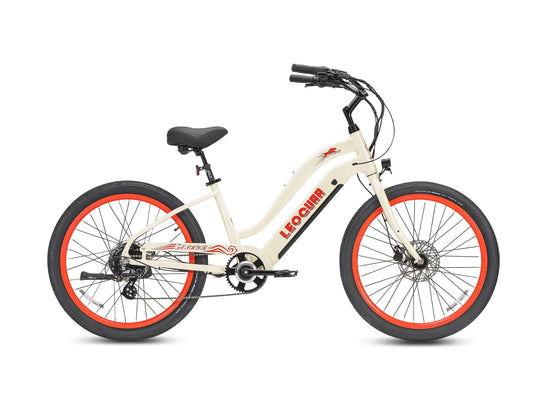
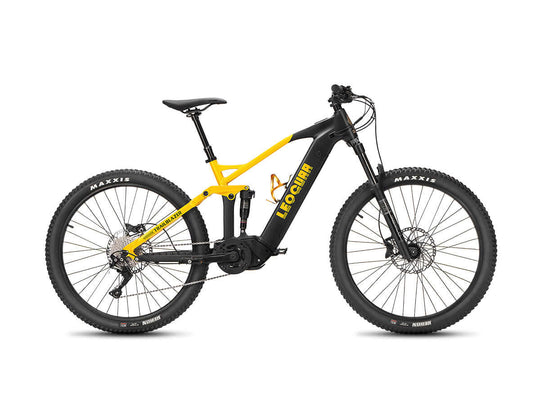
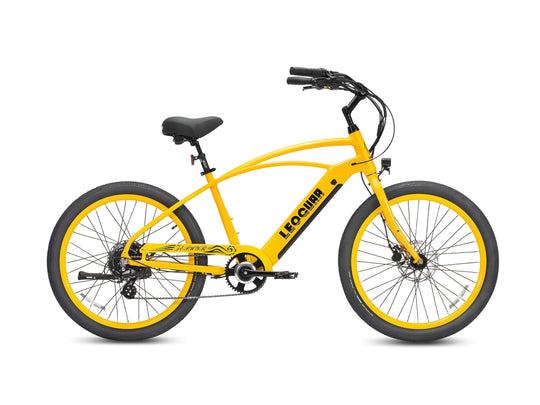
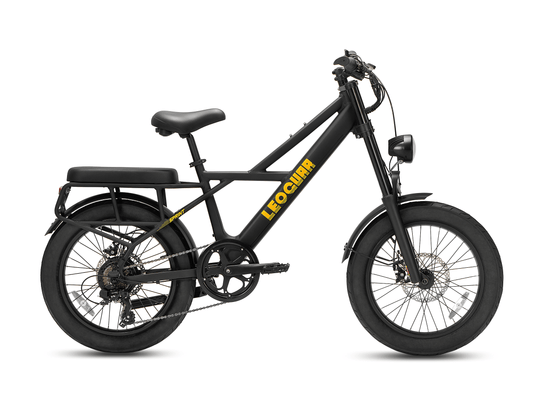
















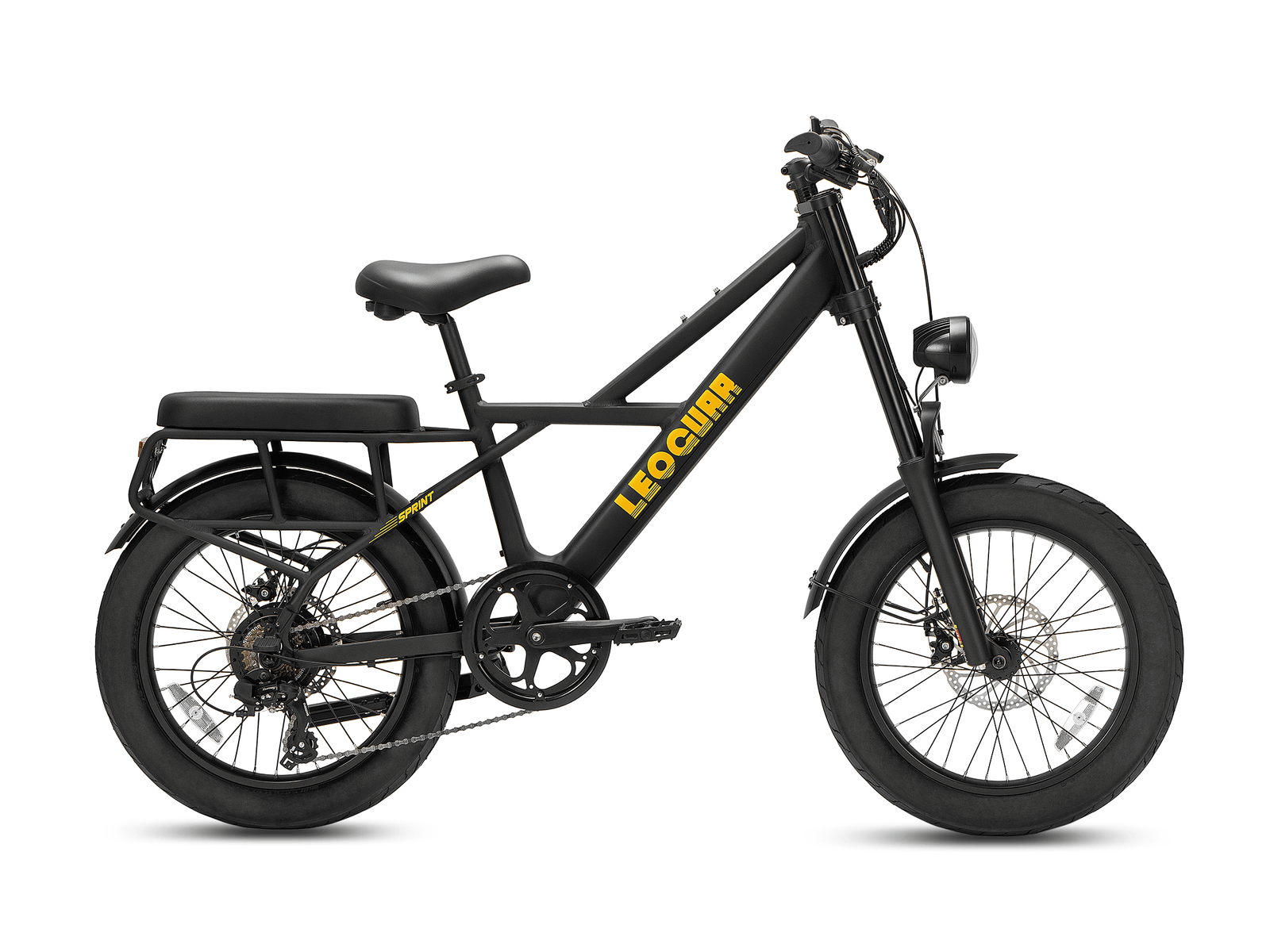








Leave a comment